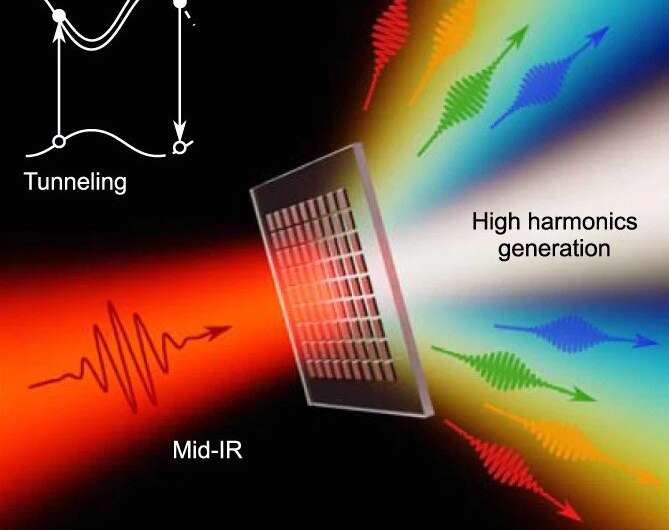Phys.org July 21, 2021
Resonantly enhanced High harmonic generation (HHG) from hot spots in nanostructures is an attractive route to overcoming the well-known limitations of gases and bulk solids. An international team of researchers (USA – Cornell University, Ohio State University, Singapore) demonstrated an ultra-thin resonant gallium phosphide platform for highly efficient HHG driven by intense mid-infrared laser pulses. The gallium-phosphide material permits harmonics of all orders without reabsorbing them, and the specialized structure can interact with the laser pulse’s entire light spectrum. The enhanced conversion efficiency facilitates single-shot measurements that avoid material damage and pave the way to study the controllable transition between perturbative and non-perturbative regimes of light-matter interactions at the nanoscale…read more. Open Access TECHNICAL ARTICLE

Illustration of an infrared laser hitting a gallium-phosphide metasurface, which efficiently produces even and odd high-harmonic generation. Credit: Daniil Shilkin